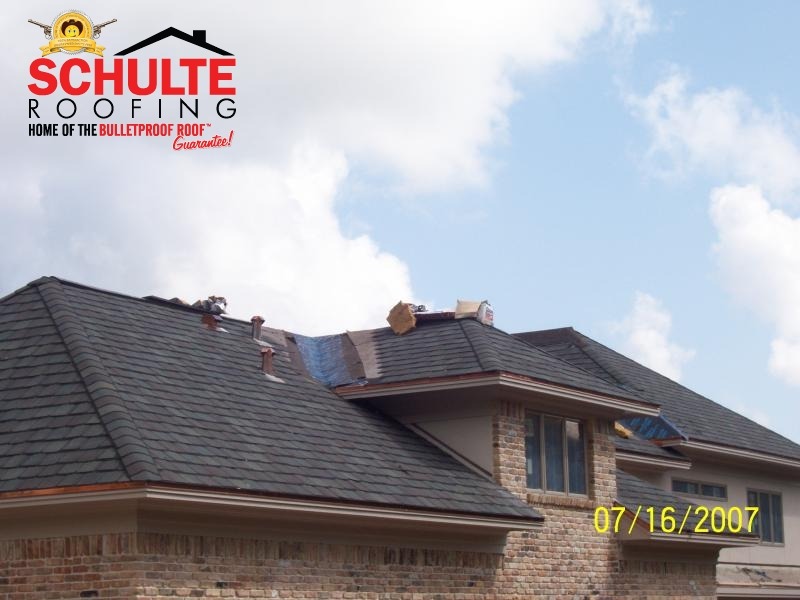 Slate is inarguably the most durable roofing material currently available. According to most experts, well-maintained slate can easily last up to 100 years. Its longevity is due to the natural strength of the rock from which the shingles are formed. Due to the material’s durability and labor-intensive production, it is also the most expensive type of roofing to be installed on a home. Slate is available in a variety of shapes and colors to complement the overall house appearance. The arrangement of the individual pieces can also create a very distinctive profile.
Slate is inarguably the most durable roofing material currently available. According to most experts, well-maintained slate can easily last up to 100 years. Its longevity is due to the natural strength of the rock from which the shingles are formed. Due to the material’s durability and labor-intensive production, it is also the most expensive type of roofing to be installed on a home. Slate is available in a variety of shapes and colors to complement the overall house appearance. The arrangement of the individual pieces can also create a very distinctive profile.
Design Variations
Slate is basically a type of rock with natural ridges that can be cut into individual shingles or tiles. Despite the fact that it is rock, slate comes in many variations; this allows designers to easily come up with a pattern that forms a unique design. These variations are achieved through color, thickness, texture, width and graduation.
- Textured Style – This type of roofing is distinct for its rough and rustic look. Its unique look is achieved by combining slate of varied thicknesses and color. The slate tiles are also intentionally installed with uneven butts to achieve a distinct profile on the roof.
- Graduated Style – The graduated style also utilizes various slate sizes but is arranged in a uniform manner, unlike the textured style. The largest pieces of slate are installed on the ridge, and the size gets smaller at the end of the roof. This unique design creates a visual illusion that the building is bigger and taller than it is in reality.
- Standard Style – The standard style is the basic type of installation method and also the least expensive. Uniform-sized slate tiles are installed side-by-side with the top layer one-quarter of the bottom layers. According to roofing contractors, the uniformity of the sizes makes this standard design easy and inexpensive to install, unlike the irregular shaped variety.
Popular Patterns
Listed below are a few of the most popular shingle patterns.
- French Lap – The French lap design is achieved by placing each shingle diagonally, instead of following the common horizontal pattern. Each tile is overlapped three inches on each side by the top layer and the bottom layer. This type of design provides better wind resistance, as the ‘V’ shaped ends effectively cancel drag during strong winds.
- Dutch Lap – The Dutch lap pattern is achieved by overlapping each shingle three inches on one side with a three-inch head lap. The result is a clean pattern of slate that neatly overhangs on either the right or left, depending on where the roofer chooses to direct the overlap. The main consideration in choosing the direction of the overlap is the dominant wind direction in the area. It has to be positioned in a way that has the least amount of wind drag.
Unlike most roofing materials, slate gives designers the capability to exercise their creativity. By varying the size, shape, color and even the pattern of how each tile is positioned allows for a wide range of profiles and designs. There are indeed many choices in selecting slate roofing patterns, so find the one with the best aesthetic potential.
Are you thinking of replacing your roof with slate and need to find reputable Houston Roofing Contractors? Schulte Roofing of Navasota services the greater Houston area and is the best selection for all roofing needs!
